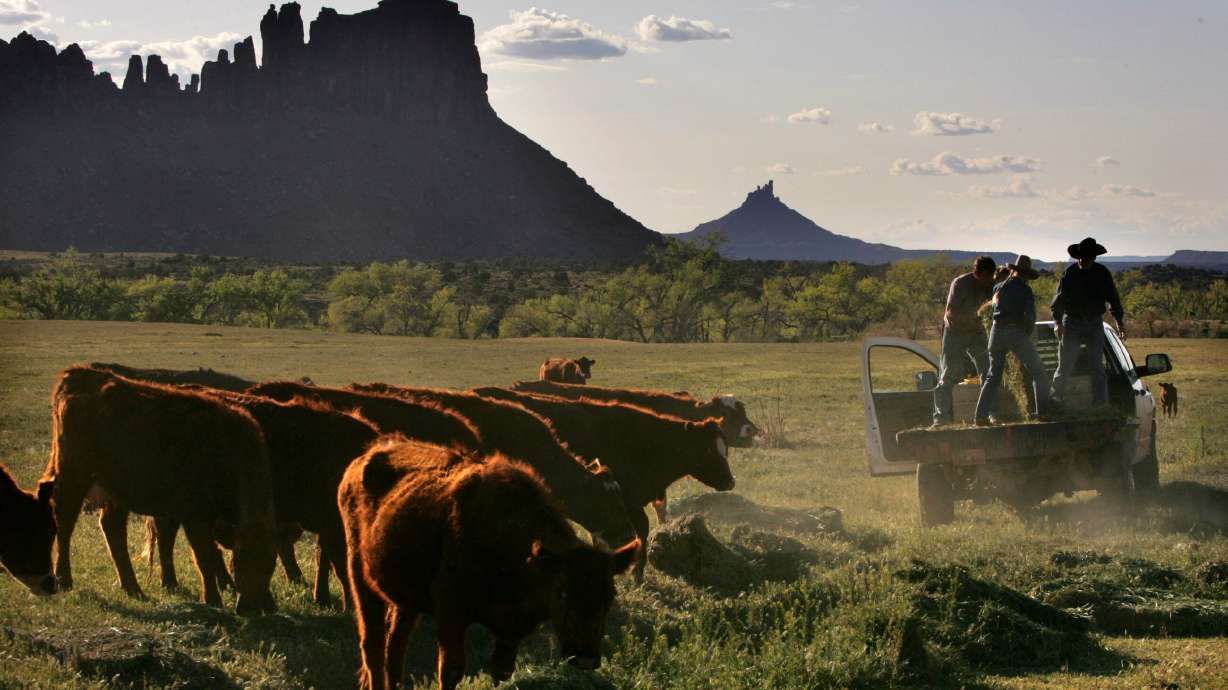Estimated read time: 4-5 minutes
- A federal judge halted a grazing project in Bears Ears National Monument.
- The Nature Conservancy proposed reservoirs and fencing, but Western Watersheds Project opposed.
- The judge ruled the Bureau of Land Management's analysis lacked data on environmental impacts.
SALT LAKE CITY — You would not think that two environmentally grounded organizations would be at odds with each other, but they are — leading to a court battle in which an administration judge has ordered a planned grazing improvement project halted in the Indian Creek area of the Bears Ears National Monument.
The Nature Conservancy, a worldwide organization active in Utah, is best known locally for its Shorelands Preserve on the eastern edge of Davis County. It also oversees the Dugout Ranch that encompasses 5,207 private acres, with an additional 335,030 acres of adjacent public lands in the form of grazing allotments associated with the ranch managed by the Bureau of Land Management and the U.S. Forest Service.
Dugout Ranch is in San Juan County, 20 miles northwest of Monticello. It is near the entrance to the Needles District of Canyonlands National Park.
The ranch wants to add 13 reservoirs for the cattle and to put in additional fencing, but the Western Watersheds Project asked for a halt to the project.
An administrative judge issued an order blocking the project, agreeing that the Bureau of Land Management had not thoroughly studied the effects of new cattle impacts on relatively pristine areas, that the reservoirs could have irreversible impacts on the land and that BLM had not shown that livestock would protect monument values.
"Given that the only stated purpose in the (environmental analysis) for constructing 13 reservoirs and five fences is to redistribute livestock, BLM had an obligation to analyze how optimized livestock distribution would impact rangeland health," the judge wrote in her ruling. "When viewed together, the immediate and irreparable impacts associated with construction activities, concentrated use, and livestock redistribution support the imposition of a stay."
But according to its website, The Nature Conservancy is emphatic about the conservation work it is doing in that region.
"By acquiring the Dugout Ranch near Canyonlands National Park, The Nature Conservancy saved one of the West's iconic landscapes from development. Today, the ranch and allotments, spanning more than 340,000 acres of private and public lands, is the foundation for the ground-breaking Canyonlands Research Center. The Center works to increase our understanding of the interactive effects of climate change and land-use, and arms decision-makers with new information to adapt to challenges such as grazing and recreation impacts, and invasive species."
"This decision halts impending environmental destruction in the northern part of Bears Ears, protecting fragile living soil crusts essential for supplying water and nutrients to the vegetation," said Laura Welp, southern Utah director with Western Watersheds Project. "Federal law requires an honest, thorough analysis of project impacts, and these lands deserve a science-based federal decision that elevates protection of Bears Ears National Monument above commercial cattle grazing."
The organization asserts cattle concentrate around water, impacting nearby vegetation, soil and biological soil crust, causing desertification. In a statement, the group said such impacts create bare soil, spreading cheatgrass and other weeds, which is a significant ecological impact.
"BLM should be required to show more evidence that allowing cattle into ungrazed places will not cause harms to the soils, vegetation, wildlife and other natural and cultural values the monument was established to protect," said Welp. "The government warns recreationists and Indigenous people not to 'bust the crust,' but has ignored the effects that more than a thousand 1,300-pound bovines have on fragile desert soils and vegetation."
In reply, the conservancy said, "The Nature Conservancy is committed to sustainable land management practices that balance the needs of local communities with ecological integrity. Our proposed range improvements in the Indian Creek Allotment aim to provide water sources for cattle away from sensitive riparian and high-recreation areas, aligning with the Bureau of Land Management's adaptive management policies. This approach supports sustainable grazing while also protecting vital ecosystems."
Its process in pursuit of the project includes:
- In 2017, The Nature Conservancy, in collaboration with the BLM, proposed the creation of several small stock ponds (earthen reservoirs) and five rangeland fences in the Indian Creek Allotment.
- On Nov. 13, the BLM issued its final decision authorizing the project after conducting an environmental assessment. Subsequently, BLM received two appeals and stay petitions from Western Watersheds Project as well as Sage Steppe Wild.
- On Jan. 31, the Department of Interior's Office of Hearings and Appeals granted a stay of the final decision, putting the proposed project on hold due to the analysis lacking sufficient data, not due to the proposed actions of The Nature Conservancy.










